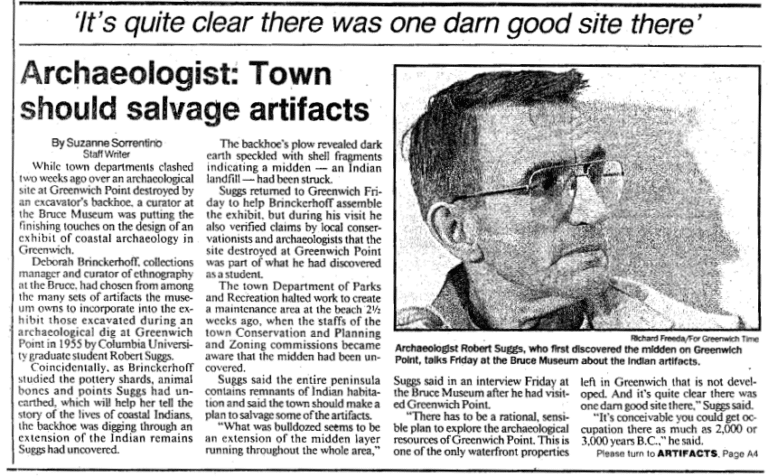The Manakaway Site: A Prehistoric Midden on Greenwich Point
In the summer of 1956, a historic midden on Greenwich Point that became known as the Manakaway Site was excavated by Robert C. Suggs, a noted archaeologist and anthropologist. Radiocarbon dating from the site suggest that the oldest pieces could be between 750-1250 years old. Unfortunately, this archaeological site was destroyed by bulldozers in 1994. The collection of research bulletins and newspaper articles collected below document the history of the site.
Research on the Manakaway Site
The earliest report on the Manakaway Site was written by Bernard Powell of the Northeastern Archaeological Research Foundation and published in the Bulletin of the Archaeological Society of Connecticut (No. 28) in February of 1958. A few months later in April, Robert Suggs published radiocarbon dating information about the Site in American Antiquities (Vol.23, No. 4). In the next issue of the Bulletin of the Archaeological Society of Connecticut, Suggs also published a full report of the site. Then, in 1987, archaeologist and professor Ernest Wiegand II authored a reevaluation of some of the ceramics found at the Manakaway Site, which was also published in the Bulletin of the Archaeological Society of Connecticut (No. 50). You can find PDFs of all of these resources by following the links below.
The Destruction of the Site

These articles, published in the Greenwich Time in April and May of 1994, document the destruction of the Manakaway Site, as well as attempts made by archaeologists to salvage objects from the site.
